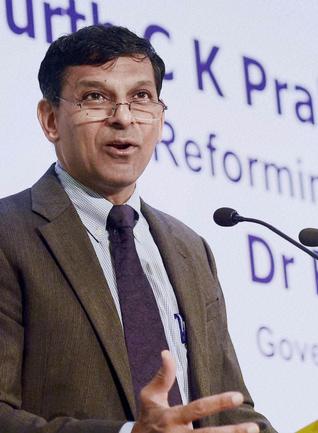
Mumbai – The International Monetary Fund (IMF) should play an active role in questioning the easy monetary policies, or so called quantitative easing measures, adopted by the developed economies rather than sitting on the sidelines, Reserve Bank of India governor Raghuram Rajan said in a speech.
 “The IMF has been sitting on the sidelines and applauding these kinds of policies right from when they have been initiated, and hasn’t really questioned the value of these kinds of policies,” he told a G20 consultation meeting in Mumbai.
“The IMF has been sitting on the sidelines and applauding these kinds of policies right from when they have been initiated, and hasn’t really questioned the value of these kinds of policies,” he told a G20 consultation meeting in Mumbai.
Dr. Rajan said developed countries were adopting monetary policies without consideration for the negative impact they have on the global economy, while emerging markets were engaging in currency intervention that sparked competitive devaluations. He did not single out any one country.
Dr. Rajan, a former chief economist at the IMF, said that it was time for policymakers, led by the IMF, to address the “extreme” policies, otherwise “we have to worry where this ends”.
A number of developed economies, most notably the United States, have engaged in significant monetary easing to boost their economies as global growth slows.
But Rajan said some of the policies had been “extreme” and ultimately detrimental to emerging markets, which struggled to cope with large inflows of capital which then disappeared when the easing stopped.
Rajan, the former IMF chief economist, said in his address that the policies initially encourage growth but the effect quickly wears off, leading to a “musical (chair-like) crisis”.
“We are in dangerous territory,” he said in the speech, which comes ahead of the G20 summit in Turkey next month.
India, whose economy is expanding at around seven percent, is presently the best performer of the group of emerging markets known as the BRICS, which is also composed of Brazil, Russia, China and South Africa.
Last month, Rajan said Brazil’s current economic malaise stemmed from trying to grow too quickly by “overemphasising old and ineffective methods of stimulus”.
India should address supply side constraints
Dr. Rajan also said India needs to address supply side constraints in order to achieve the potential growth rate of 9 per cent.
To a question on whether India can attain higher growth without inflation, he added: “The answer is no. We have to create underlying supply conditions that would allow us to sort of have much higher demand. In some sense, I see 9 per cent growth as a situation where we are investing tremendous amount and thus creating the supply which will then help the demand.”
“It is a steady process rather than an overnight process. It will take some time.




Be the first to comment